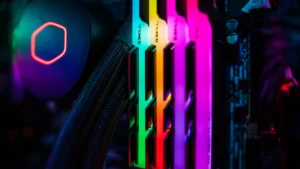The power supply is usually selected at the very end of completing the components. And there is nothing strange in it, after all, how do you know in advance what power you need? But do you know what else is important? In this guide, we’ll show you what to look for when choosing a power supply.
Expensive or cheap computer power supply?
If you look at the prices of computer power supplies in stores, you will notice that they start from around 20$. So why not buy one of the cheaper power supplies, but choose the one that costs several times more? There are many answers to this question and we will come back to them later. But now think about it this way – when choosing a processor or graphics card, are you choosing the cheapest model from a few years ago?
The power supply is one of the most important components of your computer. After all, he is responsible for supplying energy to all components, so it is worth making sure that he does it in the right way. It must maintain stable voltages, not giving more current than needed. You never know when the power supply will stop working, and due to the fact that in cheap designs, security is rarely implemented – the processor, graphics card or motherboard will most likely break.
Types of power supplies
Power supplies are divided into different categories due to their size. And this is how we distinguish:
- ATX (Advanced Technology eXtended) power supplies – these are the most popular designs. However, you have to be careful about their size. While their standard dimensions are 150 × 140 x 86 mm, the depth of the case may increase as the power of these PSUs (Power Supply Unit) increases. The higher the power, the more components the manufacturer had to put inside the device. And as their number grows, so does the size of the power supply.
- SFX (Small Form Factor) power supplies – they are slightly smaller and their dimensions are 63.5 x 125 x 100 mm. Sometimes you can meet the name SFX-L. It means that their length increase to 120 mm.
- TFX (Thin Form Factor) power supplies – these are by far the smallest structures for the least demanding computers. Their standard dimensions are 65 x 85 x 175 mm.
How to choose the power of the power supply?
The absolute most important thing when choosing a power supply is to choose the correct power. Usually, it starts around 300W and ends at 1600W. So which one should you choose? As it often happens – it depends. From what, you will ask? Of course, from the components in your computer. Their number and efficiency determine how large the current power consumption is. The bigger consumption the more powerful the power supply you need. It should also be borne in mind that the power supplies achieve the highest efficiency when they operate under a load of 50% to 80%.
At this point, it is worth mentioning TDP or Thermal Design Power. This value is expressed in watts (W) but must under no circumstances be confused with the energy consumed by the component. TDP is a parameter that determines the amount of heat released. So you should pay attention to it when choosing, for example, a CPU cooler.
How much power does your computer need?
The graphics card consumes the most electricity, followed closely by the processor. Each model uses a slightly different amount of electricity. Curled components also need more energy. We will tell you what power supply you will need for the entire set:
- A powerful computer with an Intel Core i7-11700K processor, NVIDIA GeForce RTX 3060 Ti graphics card, 2×8 GB DDR4 RAM memory, and All-in-One water cooling should have a 700 – 750 W power supply.
- A similar set, but with an Intel Core i5-11600K processor and NVIDIA GeForce GTX 1660 Ti graphics card, it needs a PSU with a power of about 550 W. The same power supply will also handle replacing the graphics card with an AMD Radeon RX 6600 XT. In turn, after replacing the processor with an AMD Ryzen 5 5600X, a 500 W power supply would suffice.
- Not enough power for two graphics cards? All right. Choosing an Intel Core i7-11700K and two NVIDIA GeForce RTX 3090 cards, you have to look for a PSU with a power of about 1300 W. If you decide on such a set, you will probably clock it up. In that case, you can aim even at 1500 W. It is impressive, but don’t worry – it doesn’t mean that your computer will use 1 kW from the socket 24 hours a day.
- What about office computers? If you install an AMD Ryzen 5 5600G processor in such a set, about 300 W is enough to power it. In fact, in any case, when you give up a graphics card, a 350-400 W power supply will be more than enough.
If you want to check what power adapter is needed to power your computer, you will find many helpful tools and calculators on the Internet. We recommend PSU Calculator from be quiet! Which, in addition to showing the recommended power, will also advise you on which model to choose.
Power supply unequal to power supply
The two 600W PSUs can differ significantly from each other. When you see the SilentiumPC 600W Vero L3 Bronze power supply and the Chieftec 600W GPE-600S BOX, for example, you might get the impression that they are the same in terms of power – they both offer 600 W. And in part they are, although there is one significant difference between them. They have different power on the 12 V, 3.3 V, and 5 V lines. But what does it actually mean?
The 3.3 V and 5 V lines are responsible for powering such components as:
- sound cards
- optical drives
- hard drives
In turn, the 12 V line is responsible for powering the most demanding components, including the processor and graphics card. And this is the line that should contribute the most to the power supply. Following our examples, for the Chieftec, the maximum load on the 12 V line is 540 W and the combined load of 3.3 V and 5 V is 120 W. For the SilentiumPC power supply: 12 V – 588 W, 3.3 V, and 5 V – 97 W.
So, both power supplies offer power exceeding 600 W? Well, not really. These are maximum values and never occur simultaneously. The total power that the power supply can transmit to the components at any given time is 600 W.
What is the result of all this? Well, when choosing a power supply, you should not only consider the total power, but it is worth looking at individual lines. Look for PSUs where the 12 V line will be as strong as possible.
There is also such thing as peak power and rated power. You should always be interested in the rated power. This is the maximum power that the power supply can operate for an extended period of time. On the other hand, peak power is only available for a short time, literally a few seconds. In the case of cheaper power supplies, it may happen that the manufacturer will mainly mention the peak one. It is worth bearing this in mind.
What else should you pay attention to?
All right. You already know which power supply to look for. What else is worth paying attention to when choosing a power supply? After all, what is the difference between the $20 model and the $50, $100, or more model?
Efficiency certificate
As the name suggests, it proves the efficiency of this component, so it determines the percentage of energy that will be transferred to the computer from the socket. As in any electronic device, some of this energy will turn into heat, and this is not needed by anyone.
These are the so-called 80 Plus certificates, which guarantee over 80% efficiency of the power supply. This means that more than 80% of the electricity consumed from the network will be transferred to the computer components. Higher efficiency, of course, means saving money, as well as higher work culture, because the power supply will not heat up too much.
The 80 Plus certificate is awarded after checking the efficiency of a given power supply at a load of 20, 50, and 100 percent. Depending on the result, it receives one of the following designations: Bronze, Silver, Gold, Platinum, and Titanium.
Behind these names are the following performance measurement results
| 20% | 50% | 100% | |
|---|---|---|---|
| 80 Plus Titanium | 94% | 96% | 94% |
| 80 Plus Platinum | 92% | 94% | 90% |
| 80 Plus Gold | 90% | 92% | 89% |
| 80 Plus Silver | 87% | 90% | 87% |
| 80 Plus Bronze | 85% | 88% | 85% |
| 80 Plus | 82% | 85% | 82% |
The 80 Plus efficiency certificate is certainly a PSU feature worth paying attention to. Of course, the greater the efficiency of the computer power supply, the better. Less energy loss, savings on the bill, better work culture of the power supply, and it’s lower heating up.
However, the choice cannot end there. The certificate is not a guarantee of the high quality of the product. It only proves its efficiency and is thus one of several features of a good power supply. It is also worth mentioning that manufacturers are not required to certify power supplies, which is a common practice in the case of cheaper models.
Voltage regulation
It is primarily responsible for maintaining the stability of voltages, the lack of which leads to incorrect operation of computer components. There are 3 types of voltage regulation:
- Group regulation – in this case, all lines (3.3 V, 5 V, and 12 V) are connected to one controller. We recommend that you avoid such a solution, because the load on any of the lines may (and rather will) result in voltage fluctuations on the others.
- Independent regulation – as the name suggests, all lines are independent of each other.
- DC / DC converter – in this case, the most important and most loaded line is regulated first, i.e. 12 V, then 3.3 V and 5 V. This solution is considered the best, and tests show that in the case of such voltage fluctuation control almost nonexistent.
Electric security
Another, but no less important thing is electrical protection. They are an absolute must-have in every decent PSU. If you do not find information about them in the specification of the power supply, do not even consider buying it. Some models have all of them, some only some – but each should contain at least a few of them. What are these safeguards and what are they responsible for?
- OCP (Over Current Protection) protection – is protection against stabilizer overload. If one of the power supply lines is too overloaded, the current will be too high, the OCP will turn off the PSU.
- OPP (Over Power Protection) protection – is overload protection. It works similar to the OCP, except that it controls the entire power supply.
- OTP (Over Temperature Protection) – thermal protection. In the event of a cooling system failure, it protects the power supply from overheating.
- OVP (Over Voltage Protection) protection – overvoltage protection. It protects the power supply from high voltage (usually 15% more than the nominal value).
- UVP (Under Voltage Protection) protection – protection against low voltage. It works similar to OVP, with the difference that it protects the components from too low voltage, which also has a negative effect on the stability of the components.
- SCP (Short Circut Protection) protection – short circuit protection.
- SIP protection (Surge & Inrush Protection) – protection against surge currents.
- BOP (Brown-Out Protection) protection – protection against mains voltage drop.
PFC system
The PFC system is responsible for regulating the power factor, i.e. changing the phase shift angle between current and voltage. Put simply – the PFC system affects the efficiency of the power supply. However, for you as a computer user, it doesn’t really matter. Without going into details – efficiency, in this case, refers to the generation of unnecessary reactive current, which is eventually returned to the power plant anyway. Of course, with some transmission losses. It can therefore be said that the PFC circuit slightly affects the “eco” level of the power supply.
The European Union requires that each power supply has such a system. Instead, there are two types: active and passive. The former is a newer and more effective solution, so it is worth reaching for this version.
Wiring
The first thing is the connectors. Each power supply can have different types and numbers of connectors, so it’s important to check what you need. Each power supply has a P1 ATX connector 24-pin (20 + 4) that is used to power the motherboard and graphics card (when there are no connectors). In addition, each model includes an EPS cable for powering the processor. Most modern PSUs will have an 8-pin (4 + 4) connector, although sometimes a 4-pin one is also available.
- PCIe connector – is responsible for powering the graphics card. High-performance GPU models, such as the GeForce RTX 3070 Ti, require additional power to work properly. You absolutely need to be sure how many PCIe plugs you will need. 6-pin and 8-pin (6 + 2) are mounted in the power supplies.
- SATA – is mainly used to power disks and optical drives. Some components, such as the NZXT Kraken x53 water cooling, also require a SATA cable to operate.
- MOLEX – slowly displaced, although it still finds some applications. It was used to power older hard drives, and today it is sometimes used to power a fan controller.
The second thing is the modularity of the cabling. There are 3 types:
- no modularity – means that all cables are permanently attached to the power supply
- semi-modular (semi-modular) – means that the ATX and EPS cables cannot be removed, while all other cables can be disconnected
- modular – means that all cables can be disconnected from the power supply
The selection of modular power supplies is especially useful in the case of powerful, highly complex computers. You can then disconnect all unnecessary wires, thanks to which it will be easier to arrange them, keep order, and have good air circulation in the PC case.
Cooling
Unused energy turns into heat, so each power supply has a cooling system. Depending on the expectations and the size of the wallet, you can choose between:
- passive cooling – the power supplies do not have fans. A great choice if you want your computer to be as quiet as possible. Such PSUs do not offer too much power and are also expensive.
- semi-passive cooling – the fan rotates only after exceeding a certain temperature. It is a great compromise between silence and power supply efficiency.
- active cooling – the fan rotates non-stop. This is by far the most popular solution.
Guarantee
As with all live equipment, pay attention to the warranty period. The time of the guarantee depends on the will of the guarantor, so it may last, for example, for a year, 5 years, or even for life. In the case of power supplies, we see large disproportions, as the warranty period can be from 12 months to 12 years.
The vast majority of people will replace the computer at least once during this time, so theoretically the computer power supply will last the life of a given PC. It is also worth mentioning the D2D (Door-To-Door) warranty. With this type of warranty, the manufacturer bears all transport costs and the buyer is only required to properly pack the product in question and attach the proof of purchase to it.
What computer power supply for a gaming computer?
Some of the latest games impress with their realistic graphics but also require enormous computing power. These, in turn, require technologically advanced graphics cards (or their combination), which entails the need to power them through high-performance computer power supplies.
Computer power supply with NVIDIA SLI
An example of such a solution is NVIDIA SLI technology. It allows you to scale the performance of the graphics subsystem by combining the power of several NVIDIA graphics cards running on an SLI-certified motherboard. If we want to use this technology, our computer must have an SLI-certified motherboard.
Additionally, it must have two or three GeForce SLI Certified GPUs. Which computer power supply will be appropriate for this configuration? You should look for an Nvidia SLI-certified computer power supply.
Recommended models of Power Supplies
Best Overall Power Supply: Corsair RM750x
750W is an extremely popular electrical power supply that mixes the capability of high-end hardware with competitive costs. It’ll definitely be enough power for many. And Corsair’s fashionable RM series has made a model that’s presently the most effective of the bunch. It’s absolutely standard, which means no untidy cables. It’s got an 80 Gold Plus efficiency rating with LAMBDA-A+ certification and a staggering 10-year warranty.
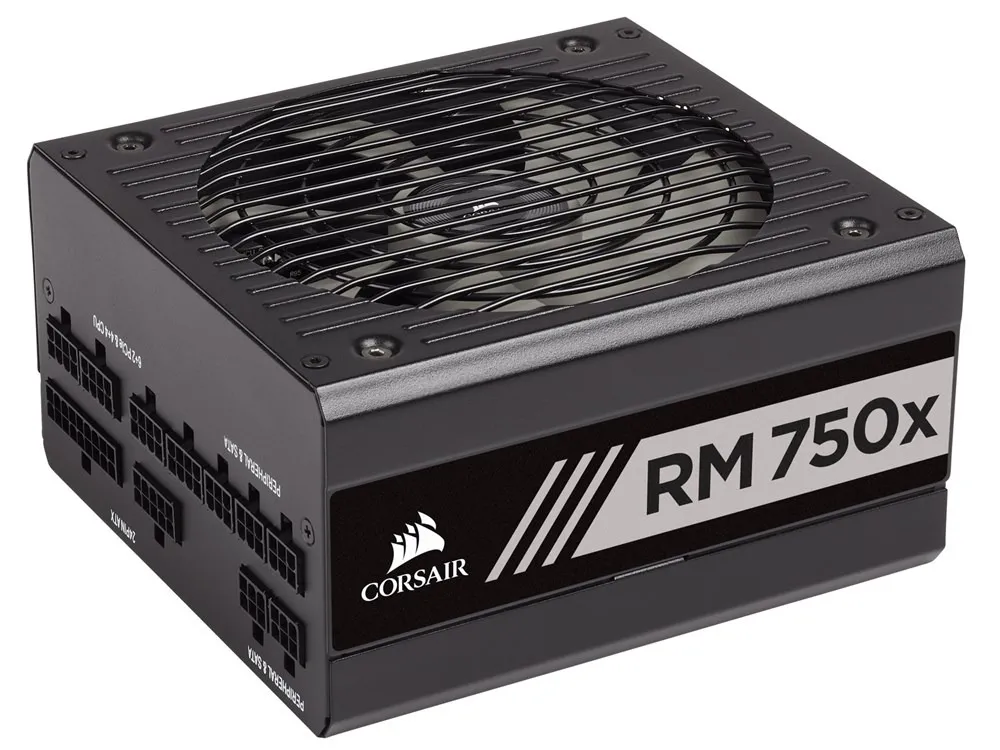

Best Extreme: EVGA SN 1600 T2


750W is an extremely popular electrical power supply that Not many gamers need to use power greater than 1000W in their gaming computers. Indeed, power supplies in this range are monsters and are best for enthusiasts who want to build extreme settings. However, if you are one of the few immortals who need enough power to run a small village, then EVGA SN 1600 T2 PSU will serve you well.
Best High-End: EVGA SN 850 T2
750W is an extremely popular electrical power supply that Similarly unless you plan to run multiple video card configurations and make some extreme system adjustments now or in the future, you really don’t need such powerful features. However, if you want to use two high-end graphics cards to run a 2-way SLI/CrossFire setup, then the rugged EVGA SN 850 T2 PSU can solve the problem. Moreover, this unit will give you enough space to construct an absurd setting.
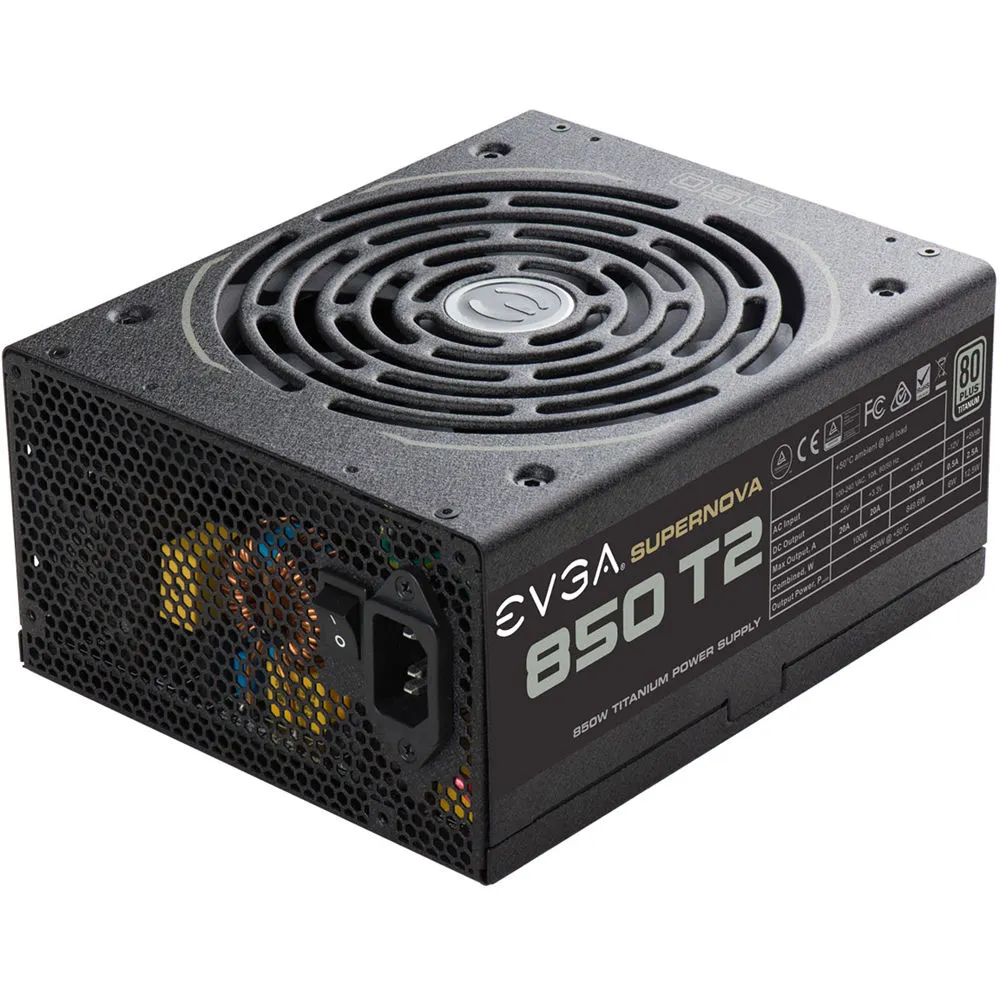

Best Budget for Gaming: Cooler Master Watt 650
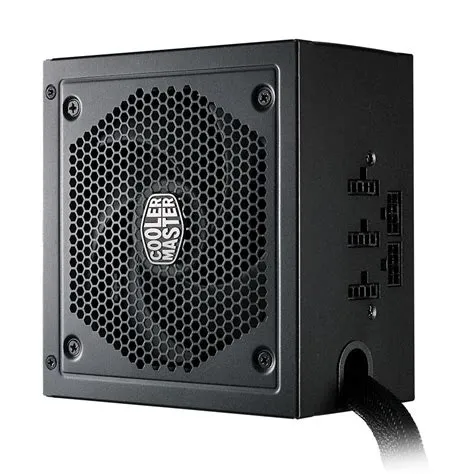

If you want to play games within your budget, then this sturdy Cooler Master series is your best choice. It’s not the cheapest, but for PSU, it’s worth sticking to a decent brand that is safe and reliable, especially if you have invested in a mid-range graphics card that you plan to overclock. It has the efficiency of 80 Plus Bronze and reaches an impressive 86% at full load.
Best RGB: Thermaltake Toughpower Grand RGB 750w
750W is an extremely popular electrical power supply that Not many gamers need to use power greater than 1000W in their gaming computers. Indeed, power supplies in this range are monsters and are best for enthusiasts who want to build extreme settings. However, if you are one of the few immortals who need enough power to run a small village, then EVGA SN 1600 T2 PSU will serve you well.
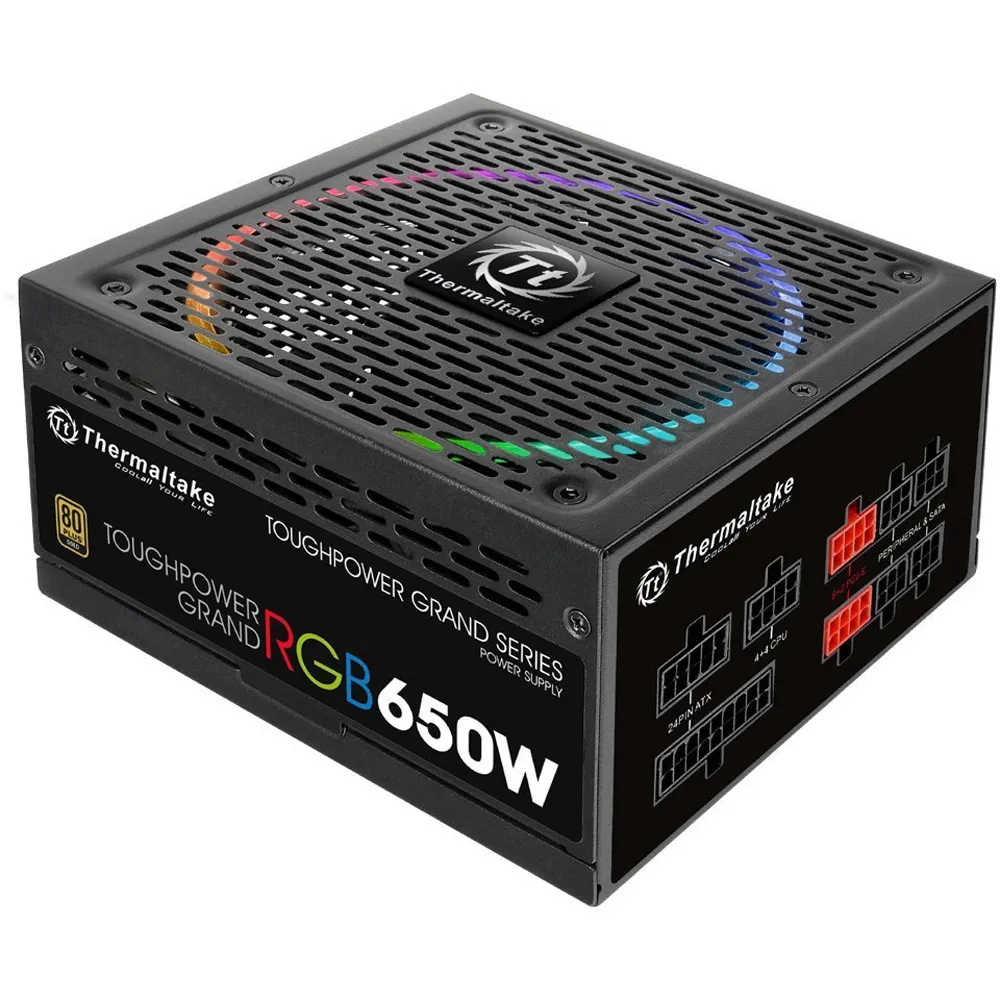

Best Budget for Home/Office: Corsair CX 550M
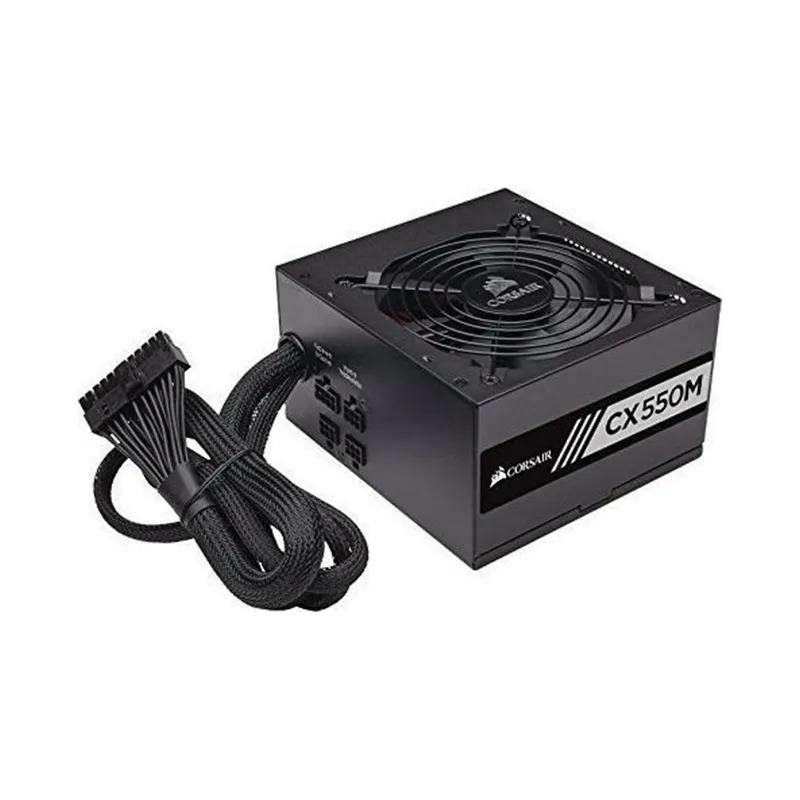

750W is an extremely popular electrical power supply that A power supply with a quality certificate may not be a bad choice, don’t you think? Its 80 PLUS Bronze guarantee a high level of energy efficiency. In addition to its power supply, its long service life and compatibility make this product one of the best personal computer power supplies on the market. Its operation can provide 550W of power and high efficiency. This manages to cut back energy costs and expenses, which you’ll check once the electricity bill arrives.


